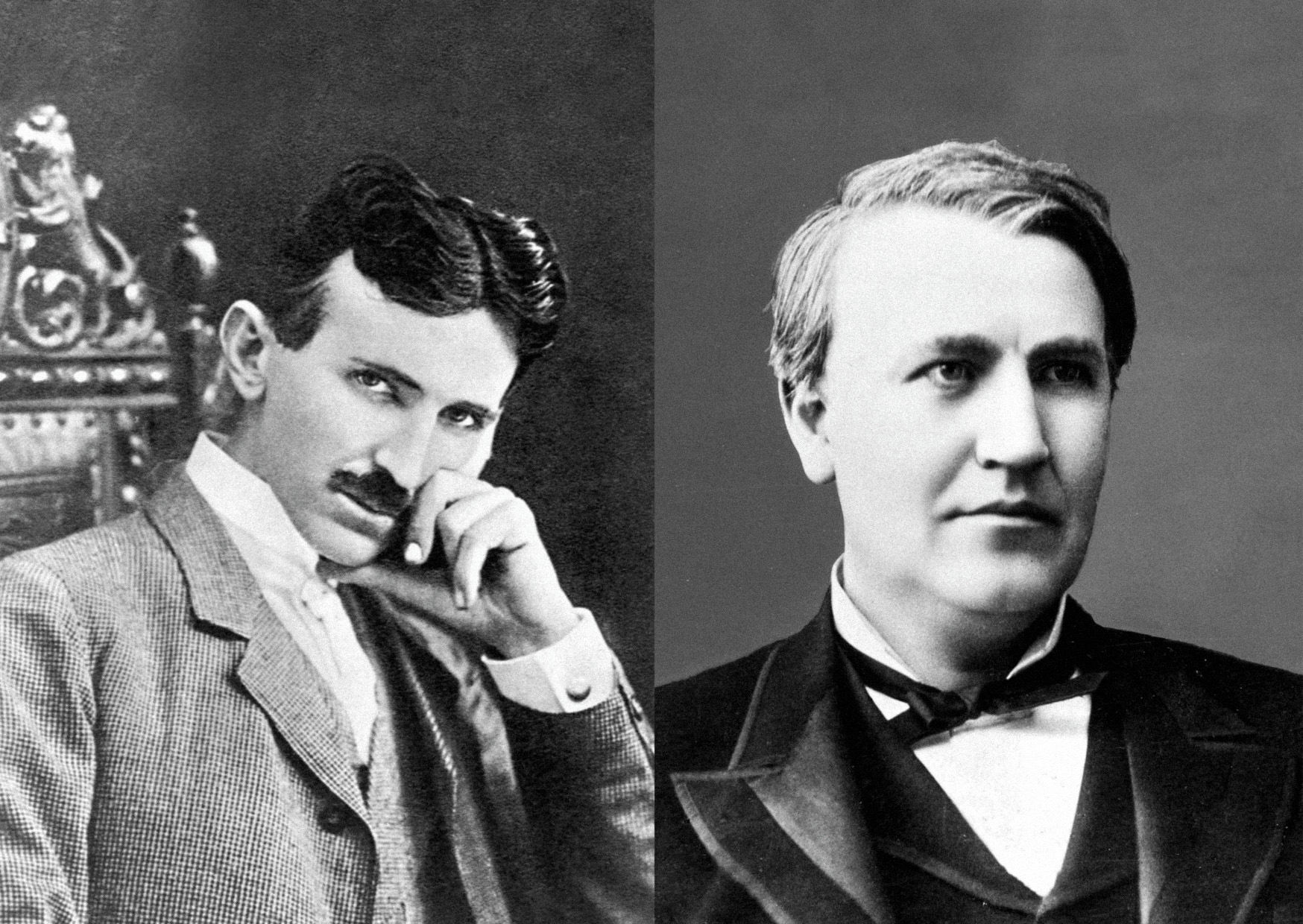The War of Currents
Přečtěte si článek o počátcích elektrifikace v USA a poté odpovězte na otázky:
- Co bylo podstatou sporu ve válce proudů a kdo byli jeho hlavní představitelé?
- Vysvětlete význam zkratek AC a DC.
- Jaký význam ve válce proudů měl transformátor?
In the late 19th century, three of the most brilliant inventors, Thomas Edison, Nikola Tesla and George Westinghouse, battled over which electricity system – direct current (DC) or alternating current (AC) – would become a standard. During their bitter dispute, so called ‘the War of the Currents’, Edison championed the direct-current system, in which electrical current flows steadily in one direction, whilst Tesla and Westinghouse promoted the alternating-current system, in which the current’s flow constantly alternates.

Zdroj
The most famous of the three visionary men, Thomas Edison, developed the world’s first practical light bulb in the late 1870s, building a system for producing and distributing electricity so that businesses and homes could use his new invention. He opened his first power plant, in New York City, in 1882. Two years later, Tesla, a young engineer from Croatia, immigrated to America and went to work for Edison. Tesla helped improve Edison’s DC generators while also attempting to interest his boss in an AC motor he’d been developing. However, Edison, a firm supporter of DC, claimed AC had no future.
Nikola Tesla quit his job in 1885 and a few years later received a number of patents for his AC technology. In 1888, he sold his patents to industrialist George Westinghouse, whose Westinghouse Electric Company had quickly become an Edison competitor. Alternating current gained its key advantage over direct current with the development of functional transformers that allowed the voltage to be “stepped up” to much higher transmission voltages and then dropped down to a lower end user voltage for business and residential use. The high voltages allowed low currents and low current causes lower power losses in the wires. Therefore you can build a central generating station to supply a large area.
By the end of 1887 Westinghouse had 68 AC power stations compared to Edison’s 121 DC stations. Feeling threatened by the rise of AC, Edison launched a propaganda campaign to discredit AC and convince the public it was dangerous. As a part of this campaign, animals were publicly electrocuted with AC, and when New York State sought a more humane alternative to hanging its death-penalty prisoners, Edison, once an opponent of capital punishment, recommended alternating current-powered electrocution as the fastest, deadliest option. In 1890, convicted murderer William Kemmler became the first person to die in the electric chair. The apparatus, designed by an electricity salesman secretly on Edison’s payroll, was powered by a Westinghouse AC generator.

Zdroj
Ultimately, however, Edison failed in his efforts to discredit AC. Westinghouse won the contract to supply electricity to the 1893 World’s Fair in Chicago – beating out rival General Electric, which was formed in 1892 by a merger involving Edison’s company – and the expo became a dazzling showcase for Tesla’s AC system. Westinghouse also received an important contract to construct the AC generators for a hydro-electric power plant at Niagara Falls; in 1896, the plant started delivering electricity all the way to Buffalo, 26 miles away. The achievement was regarded as the unofficial end to the War of the Currents. The technology that was better won in the competition.
Zpracováno podle https://www.history.com/news/what-was-the-war-of-the-currents.

